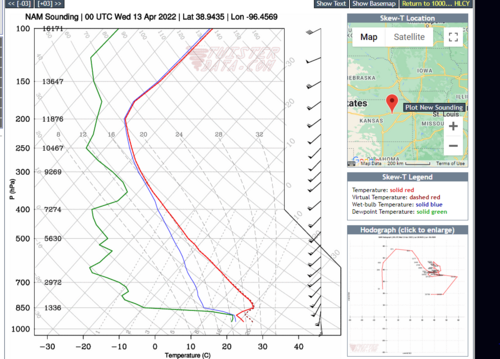I view Tue. 4/12 as a moderately impressive, conditional early season opportunity. If everything breaks our way, there could be a few tornadic supercells dispersed widely across the DFW-MCI I-35 corridor before dark. I definitely don't see the ceiling for this event being in the same galaxy as 4/26/91, though. That event had much better moisture quality, not to mention an absolutely textbook, negatively-tilted, well-timed trough ejection. Plus, 0-6 km bulk shear for Tue. looks on the order of 30-40 kt south to 40-50 kt north, a far cry from 1991. Overlaying these deficiencies, it becomes difficult to envision anything like a violent outbreak. There are plenty of substantive differences, but I'm picturing something more like 5/1/08 (samples:
KS,
NE OK,
C OK) as a reasonable "goal" for the outcome here.
Assuming we manage robust CI by 4-6pm, I can see isolated supercells that are initially nontornadic or weakly tornadic, with 1-2 perhaps becoming more substantially tornadic in the early evening as they move into lower LCLs (provided they can overcome moderate CINH dynamically). But, a daytime cap bust remains quite possible outside of TX, where shear is pedestrian. Given these contingencies, I don't love the fact that we're waiting for moisture that will need to traverse severely drought-stricken TX, or that the dryline itself will reside mainly over drought-afflicted areas.


